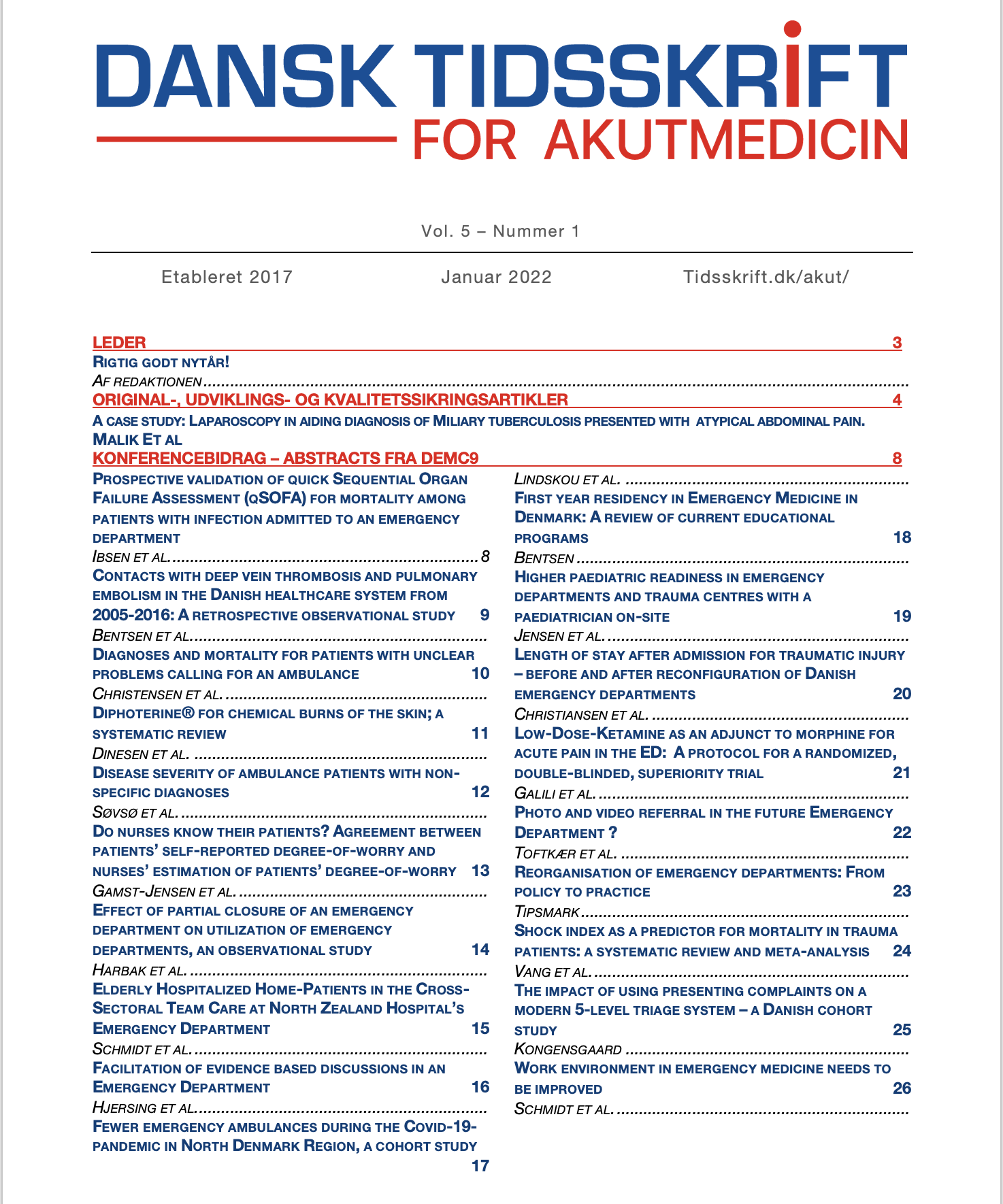Resumé
Background: Emergency Medicine is the youngest Danish medical specialty, finally adopted in 2017 with the first residents enrolled in 2018. The residency consists of 1 year introduction employment with a primary residency spanning 5 years after the introduction year. The 1-year program consists of different setups of time in certain specialty areas, encompassing the primary specialties internal medicine, abdominal surgery and orthopedic surgery. The education programs can be differently structured, but with the same end qualifications for the resident. We aimed to investigate the different structures of the education programs for the 1st year residency in Emergency Medicine in Denmark.
Methods: All education programs were extracted from the three different medical educational regions in Denmark in March 2020. We reviewed all programs and the following data was extracted: Time in each primary specialty, medical courses, possibility to practice the role of team leader in critical ill patients and education in point-of-care ultrasound.
Results: 20 of 21 emergency departments in Denmark employs residents in Emergency Medicine for their 1-year introductory residency. 13 of 20 programs assess patients in internal medicine and abdominal surgery in the same time period. 7 out of 20 has pre-specified time for patients in abdominal surgery. 10 of 20 programs does not have specified time in orthopedic surgery. This is part of the internal medicine period or not specified further. Only programs in The Region of Southern Denmark have pre-specified periods for all three main specialties. 14 of 20 programs present opportunity to participate in medical courses such as Advanced Life Support. Only 3 of 20 programs present opportunity for further education in point of care ultrasound, other than the obligatory focused lung ultrasound and ultrasound guided peripheral access. 7 of 20 programs present opportunity to participate in primary assessment of critical ill patients as team leader or observer, for critical care calls.
Conclusion: The education programs in Denmark for Emergency Medicines 1st year residency varies greatly in both time in major specialties, medical courses, point-of-care ultrasound and training in the role as team leader.
Licenseret under en Creative Commons Kreditering 4.0 International-licens (CC BY 4.0).
© Forfatterne.

